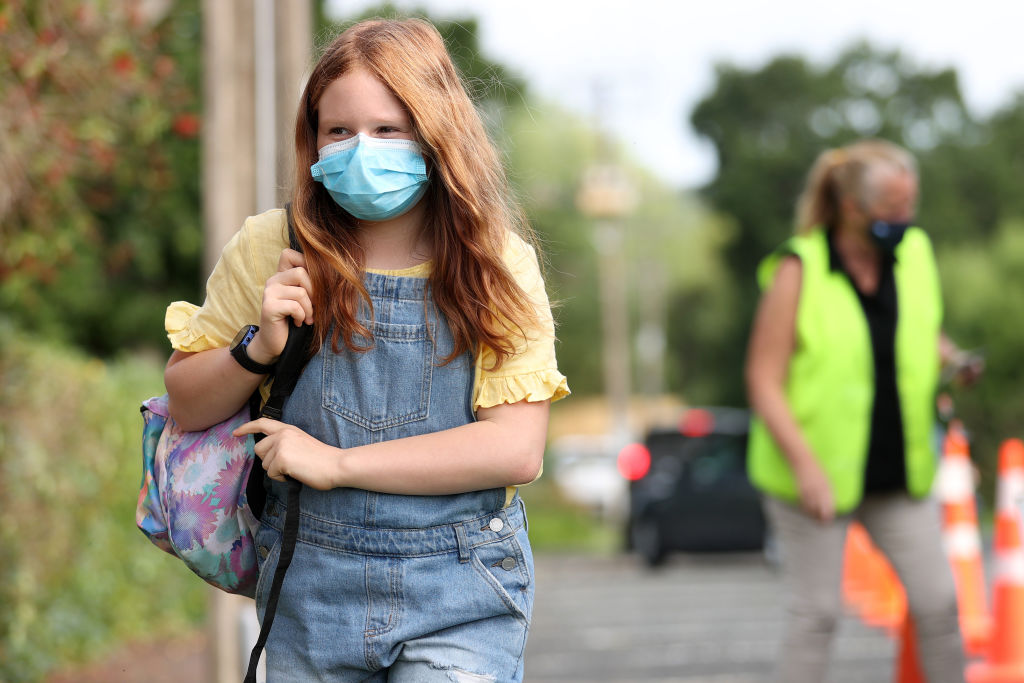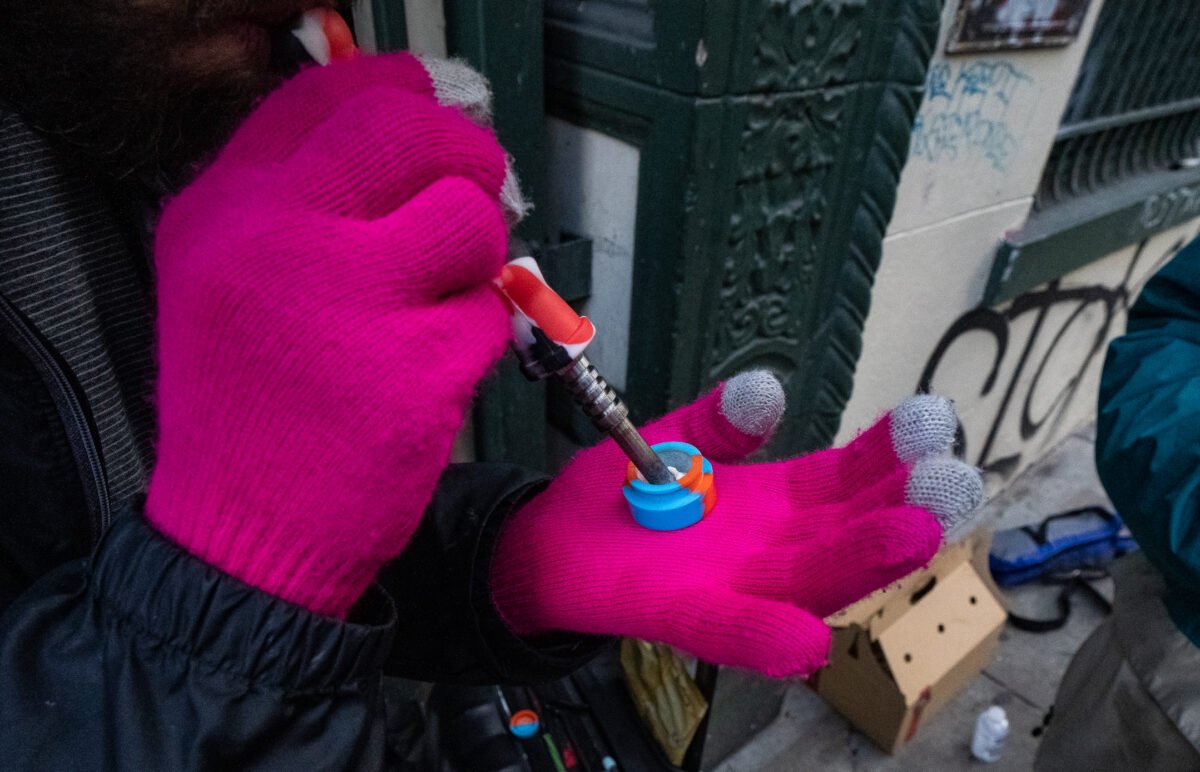Teen Drug Use Declined by Record Numbers During the Pandemic, But is Now Climbing
Among 17 high-income nations, America has the highest probability of its residents dying by age 50, according to Monitoring the Future’s (MTF) 2022 report, and a primary reason is drug use.
“A widespread epidemic of illicit drug use emerged in the 1960s among U.S. youth, and since then, dramatic changes have occurred in the use of nearly all types of illicit drugs, as well as alcohol and tobacco,” MTF states.
It added that concerning changes in society, youth are often on the “leading edge,” and what happens in that demographic reverberates throughout society.
“The substantial changes in drug use during the last 50 or so years have proven to be largely a youth phenomenon,” MTF states, adding that “the relapse in the drug epidemic in the early 1990s initially occurred almost exclusively among adolescents. Adolescents and adults in their 20s fall into the age groups at highest risk for illicit drug use.”

Led by a research team of professors at the University of Michigan, MTF is an ongoing study that has collected data on American adolescents and adults since 1975. The panel study has over 108,000 individuals and annually surveys 28,500 teens and adults. MTF receives funding from the National Institute on Drug Abuse, and is there to help inform policymakers and the government about ways to help reduce drug use.
But, in 2021, during the height of the COVID-19 pandemic, MTF reported that teen drug use decreased—indeed, the declines in illicit drugs other than marijuana by teens were the “largest and most sweeping ever recorded in the past 46 years,” the University of Michigan states. Plus, in 2022, MTF found that teen drug use, overall, held steady instead of increasing.
But, 2023 doesn’t seem to be following that trend.
Declining Numbers
According to the National Institute of Health (NIH), stopping adolescent drug use is of primary importance because it’s highly associated with adult substance abuse.
“The adolescent years represent an important developmental stage during which the foundation for future patterns in substance use is often established. Both the quantity and frequency of use during this period are strongly associated with risks for heavy use and misuse of substances in adulthood,” NIH states.
Tracy Ritter, a family support specialist for Advocates for Recovery Colorado and co-chair of a workgroup within Colorado’s state response to the drug crisis, agrees.
“When you start younger, the brain isn’t developed,” Ritter told The Epoch Times. “The brain isn’t actually developed fully until about 25 years of age. So, because of that immature brain development, there is that greater chance for that addiction than if you started later in life.”

Additionally, “sudden environmental changes” are considered a risk factor for youth substance use, especially if they’re living in a “challenging home situation” or a “resource-limited area,” NIH reports. As such, the COVID-19 lockdowns and societal disruptions could potentially increase substance use behaviors. But in 2021, that turned out not to be the case.
The University of Michigan’s Senior Public Relations representative, Morgan Sherburne, said about the MTF study, “The percentage of youth who had ever used any illicit drug other than marijuana decreased by more than 25 percent in 2021. Specifically, in 12th grade, this percentage was 27 percent smaller in comparison to the previous year, in 10th grade, the decline was 31 percent, and in 8th grade, the drop was 30 percent.
Sherburne added that when the above numbers are put in context, the 12th-grade decline is three times larger than the previous record, the 10th-grade decline is twice as large as the previous record, and the 8th-grade decline is 50 percent larger than the previous record.
Declines in teen marijuana use, alcohol, and vaped nicotine were also observed, however not at record numbers.
Unintended Consequences
Dr. Richard Miech, the principal investigator of the MTF study and research professor at the Institute for Social Research, said, “These declines are an unintended consequence of the pandemic. Among the many disruptions adolescents have experienced as a result of the pandemic are disruptions in their ability to get drugs, disruptions in their ability to use drugs outside of parental supervision, and disruptions in peer groups that encourage drug use.”
He added that the decline wasn’t from teens stopping a drug they’d already started but from teens not beginning drugs.
Dr. Nora Volkow, the director of the National Institute on Drug Abuse, concurred.
“In 2021, the overall percentage of adolescents reporting illicit drug use decreased significantly, and in 2022, most reported substance use among adolescents held steady with those lower levels reported in 2021,” she told The Epoch Times via email. “These data are unprecedented and highlight one unexpected potential consequence of the COVID-19 pandemic, which caused seismic shifts in the day-to-day lives of adolescents.
“Numerous factors likely influenced this decrease in substance use among young people, including drug availability, family involvement, differences in peer pressure, and other factors. However, we do not have research to definitively say which of these factors played a direct role in decreasing substance use among young people, nor how strong of a role each of these factors may have played.

“The Monitoring the Future Survey is one of the best and most timely tools we have to monitor and understand changes in substance use among young people over time, including through historic events such as the COVID-19 pandemic. It is encouraging that we did not observe a significant increase in substance use in 2022, even as young people largely returned to in-person school, extracurricular activities, and other social engagements.”
Volkow noted, however, that the MTF survey is administered in a school setting. Teens not attending school have a higher probability of drug use.
The NIH, in its systemic review of 49 studies, echoed Volkow and Miech’s observations.
“Youth substance use most often takes place outside the home environment and usually within the context of the peer group. Moreover, youth substance use is highly dependent on availability and access to drugs and other substances.
“The public health restrictions that were necessary during the COVID-19 pandemic limited the time most adolescents spent in-person with their peers, and it follows that availability and access to alcohol, tobacco, and other substances was effectively limited during community lockdowns.

“In short, young people confined to their homes with parents had fewer opportunities for accessing and using substances. Thus, limited peer-group gatherings, decreased availability and access to substances, and increased time spent in the home with parents—all well-established factors shown to be effective in prevention efforts aimed at decreasing substance use—are likely to have conferred important protection against substance use during COVID-19 as observed in the decline in prevalence reported across the bulk of studies we reviewed.”
But Volkow cautioned, “It is also extremely important to note that while substance use among young people is not becoming more common, it is becoming more dangerous. Fentanyl, a potent synthetic opioid, has proliferated in the illicit drug supply, including in counterfeit pills made to resemble prescription medications like benzodiazepines, ADHD medications, and opioids.
“Young people should be aware that prescription pills purchased on social media, given to someone by a friend, or obtained from an unknown source may contain deadly fentanyl. Young people should also be aware that naloxone, a medication that can quickly reverse an opioid overdose, is a safe and lifesaving drug. Moving forward, we must find ways to educate young people about the dangers of illicit counterfeit pills and to expand access to naloxone among this population.”
Mental Health and the Future
Despite the decline in teen drug use during the pandemic, mental health issues among teens skyrocketed.
Data collected by the Center for Disease Control and Prevention’s first Adolescent Behaviors and Experiences Survey found that in 2021, 37.1 percent of high school students experienced poor mental health during the COVID-19 pandemic, 44.2 percent experienced “persistent feelings of sadness or hopelessness,” 20 percent seriously considered suicide, and nine percent attempted suicide.

“Youth with poor mental health may struggle with school and grades, decision making, and their health,” the survey reported. “Mental health problems in youth are also often associated with other health and behavioral risks such as increased risk of drug use, experiencing violence, and higher risk sexual behaviors.”
And, while official numbers for teen drug use in 2023 aren’t yet available, the Colorado Behavioral Health Administration told The Epoch Times via email, “As we exit the acute stages of the pandemic, there is consensus that substance use in [youth] is increasing again.”




